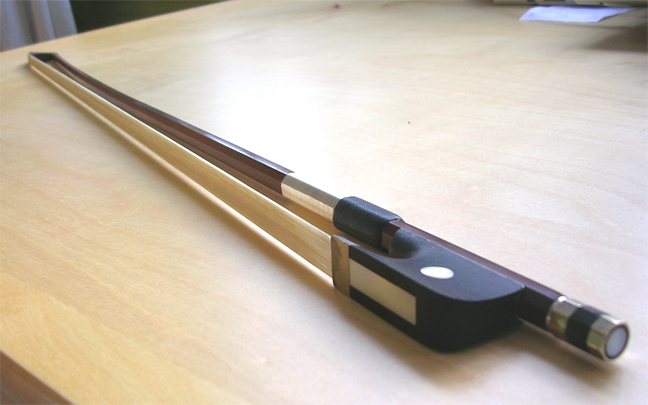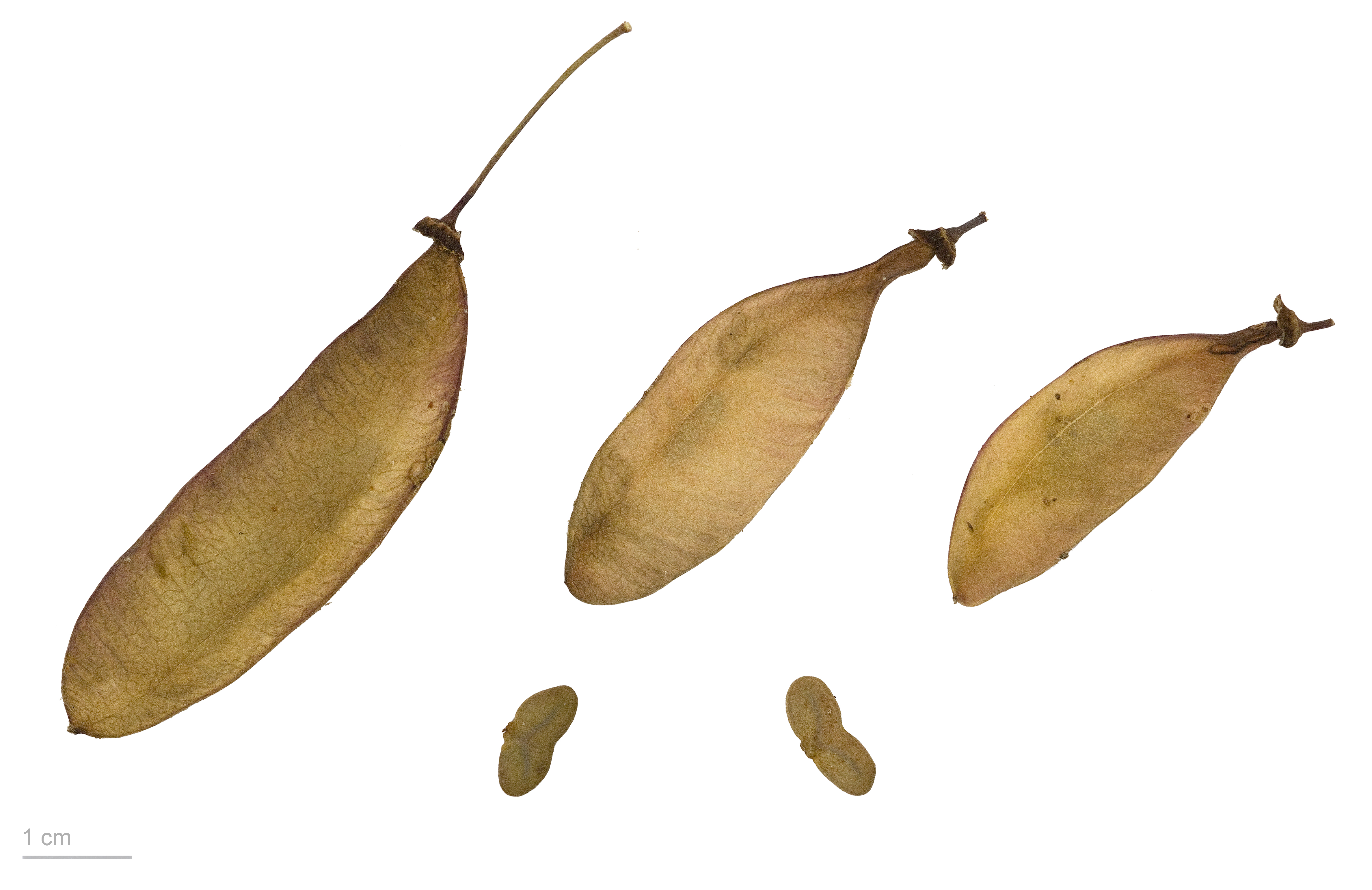|
Brazilwood
''Paubrasilia echinata'' is a species of flowering plant in the legume family, Fabaceae, that is endemic to the Atlantic Forest of Brazil. It is a Brazilian timber tree commonly known as Pernambuco wood or brazilwood (, ; Tupi: ) and is the national tree of Brazil. This plant has a dense, orange-red heartwood that takes a high shine, and it is the premier wood used for making bows for stringed instruments. The wood also yields a historically important red dye called brazilin, which oxidizes to brazilein. The name ''pau-brasil'' was applied to certain species of the genus '' Caesalpinia'' in the medieval period, and was given its original scientific name ''Caesalpinia echinata'' in 1785 by Jean-Baptiste Lamarck. More recent taxonomic studies have suggested that it merits recognition as a separate genus, and it was thus renamed ''Paubrasilia echinata'' in 2016. The Latin specific epithet of ''echinata'' refers to hedgehog, from ''echinus'', and describes the thorns which cover ... [...More Info...] [...Related Items...] OR: [Wikipedia] [Google] [Baidu] |
Name Of Brazil
The name ''Brazil'' is a shortened form of ''Terra do Brasil'' ("Land of Brazil"), a reference to the brazilwood tree. The name was given in the early 16th century to the territories leased to the merchant consortium led by Fernão de Loronha, to exploit brazilwood for the production of wood dyes for the European textile industry. The term for the brazilwood tree in Portuguese, ''pau-brasil'', is formed by ''pau'' ("wood") and '' brasa'' ("ember"), the latter referring to the vivid red dye that can be extracted from the tree. The word ''brasa'' is formed from Old French ''brese'' ("ember, glowing charcoal"). Native names According to tradition, before colonisation, the native name of the land was the one given by the local indigenous peoples, ' ( Tupi for "Land of the Palms"). However, exact translation of "Land of Palms" would be ''Pindotetama'' or ''Pindoretama'' in the Tupi language, suggesting ''Pindorama'' may be a later corruption of the original term. ''Pindorama'' ... [...More Info...] [...Related Items...] OR: [Wikipedia] [Google] [Baidu] |
Brazilin
Brazilin is a naturally occurring, homoisoflavonoid, red dye obtained from the wood of '' Paubrasilia echinata'', '' Biancaea sappan'', ''Caesalpinia violacea'', and '' Haematoxylum brasiletto'' (also known as Natural Red 24 and CI 75280). Brazilin has been used since at least the Middle Ages to dye fabric, and has been used to make paints and inks as well. The specific color produced by the pigment depends on its manner of preparation: in an acidic solution brazilin will appear yellow, but in an alkaline preparation it will appear red. Brazilin is closely related to the blue-black dye precursor hematoxylin, having one fewer hydroxyl group. Brazilein, the active dye agent, is an oxidized form of brazilin. Sources of brazilin Brazilin is obtained from the wood of '' Paubrasilia echinata'', '' Biancaea sappan'' (Sappanwood), ''Caesalpinia violacea'', and '' Haematoxylum brasiletto''. The sappanwood is found in India, Malaysia, Indonesia and Sri Lanka, the latter being a major suppl ... [...More Info...] [...Related Items...] OR: [Wikipedia] [Google] [Baidu] |
Pernambuco
Pernambuco ( , , ) is a States of Brazil, state of Brazil located in the Northeast Region, Brazil, Northeast region of the country. With an estimated population of 9.5 million people as of 2024, it is the List of Brazilian states by population, seventh-most populous state of Brazil and with around 98,067.877 km2, it is the List of Brazilian states by area, 19th-largest in area among federative units of the country. It is also the sixth-most densely populated with around 92.37 people per km2. Its capital and largest city, Recife, is one of the most important economic and urban hubs in the country. Based on 2019 estimates, the Recife metropolitan area, Recife Metropolitan Region is seventh-most populous in the country, and the second-largest in Northeast Region, Brazil, northeastern Brazil. In 2015, the state had 4.4% of the national population and produced 2.8% of the national gross domestic product (GDP). The contemporary state inherits its name from the Captaincy of Pernambuco, ... [...More Info...] [...Related Items...] OR: [Wikipedia] [Google] [Baidu] |
Sappanwood
''Biancaea sappan'' is a species of flowering tree in the legume family, Fabaceae, that is native to tropical Asia. Common names in English include sappanwood and Indian redwood. It was previously ascribed to the genus '' Caesalpinia''. Sappanwood is related to brazilwood (''Paubrasilia echinata''), and was itself called ''brasilwood'' in the Middle Ages. ''Biancaea sappan'' can be infected by twig dieback ('' Lasiodiplodia theobromae''). This plant has many uses. It has antibacterial and anticoagulant properties. It also produces a valuable reddish dye called brazilin, used for dyeing fabric as well as making red paints and inks. Slivers of heartwood are used for making herbal drinking water in various regions, such as Kerala, Karnataka and Central Java, where it is usually mixed with ginger, cinnamon, and cloves. The heartwood also contains juglone (5-hydroxy-1,4-naphthoquinone), which has antimicrobial activity. Homoisoflavonoids (sappanol, episappanol, 3'-deoxysappanol, 3'-O ... [...More Info...] [...Related Items...] OR: [Wikipedia] [Google] [Baidu] |
Fabaceae
Fabaceae () or Leguminosae,International Code of Nomenclature for algae, fungi, and plants. Article 18.5 states: "The following names, of long usage, are treated as validly published: ....Leguminosae (nom. alt.: Fabaceae; type: Faba Mill. Vicia L.; ... When the Papilionaceae are regarded as a family distinct from the remainder of the Leguminosae, the name Papilionaceae is conserved against Leguminosae." English pronunciations are as follows: , and . commonly known as the legume, pea, or bean family, is a large and agriculturally important family of |
Manilkara Bidentata
''Manilkara bidentata'' is a species of '' Manilkara'' native to a large area of northern South America, Central America and the Caribbean. Common names include bulletwood, balatá, ausubo, massaranduba, quinilla, and (ambiguously) " cow-tree". Description The balatá is a large tree, growing to tall. The leaves are alternate, elliptical, entire, and long. The flowers are white, and are produced at the beginning of the rainy season. The fruit is a yellow berry, in diameter, which is edible; it contains one (occasionally two) seed(s). Its latex is used industrially for products such as chicle. Uses The latex is extracted in the same manner in which sap is extracted from the rubber tree. It is then dried to form an inelastic rubber-like material. It is almost identical to gutta-percha (produced from a closely related southeast Asian tree), and is sometimes called ''gutta-balatá''. Balatá was often used in the production of high-quality golf balls, to use as the outer l ... [...More Info...] [...Related Items...] OR: [Wikipedia] [Google] [Baidu] |
Florianópolis
Florianópolis () is the capital and second largest city of the state of Santa Catarina (state), Santa Catarina, in the South Region, Brazil, South region of Brazil. The city encompasses Santa Catarina Island and surrounding small islands, as well as part of the mainland. It has a population of 537,211, according to the 2022 Brazilian census, the second-most populous city in the state (after Joinville), and the List of cities in Brazil by population, 39th in Brazil. The metropolitan area has an estimated population of 1,111,702, the Metropolitan areas in Brazil, 21st largest in the country. The city is known for having the country's third highest Human Development Index score among all Brazilian cities (0.847). The economy of Florianópolis is heavily based on information technology, tourism, and services. The city has 60 beaches and is a center of surfing activity. Lagoa da Conceição is the most famous area for tourism, recreation, nature, and extreme sports. ''The New York Ti ... [...More Info...] [...Related Items...] OR: [Wikipedia] [Google] [Baidu] |
Legume
Legumes are plants in the pea family Fabaceae (or Leguminosae), or the fruit or seeds of such plants. When used as a dry grain for human consumption, the seeds are also called pulses. Legumes are grown agriculturally, primarily for human consumption, but also as livestock forage and silage, and as soil-enhancing green manure. Legumes produce a botanically unique type of fruit – a simple fruit, simple Dry fruits, dry fruit that develops from a simple carpel and usually Dehiscence (botany) , dehisces (opens along a seam) on two sides. Most legumes have Symbiosis , symbiotic nitrogen fixation , nitrogen-fixing bacteria, Rhizobia, in structures called root nodules. Some of the fixed nitrogen becomes available to later crops, so legumes play a key role in crop rotation. Terminology The term ''pulse'', as used by the United Nations' Food and Agriculture Organization (FAO), is reserved for legume crops harvested solely for the dry seed. This excludes green beans and Pea , green ... [...More Info...] [...Related Items...] OR: [Wikipedia] [Google] [Baidu] |
Haematoxylum Brasiletto
''Haematoxylum brasiletto'', or Mexican logwood, is a species of tropical hardwood tree in the legume family, Fabaceae. It is known in its native Mexico and Guatemala as "palo de brasil" or "palo de tinto". The timber is used to make bows for stringed instruments, the manufacture of dyes and in ethnobotany. Description ''H. brasiletto'' is a small tree or large thorny shrub, seven to fifteen metres high. The trunk and larger branches are fluted and the heartwood is deep red. The tree has pinnate leaves with three pairs of heart-shaped leaflets and no terminal leaflet. The clusters of yellow flowers are typical of the Caesalpinioideae, with five distinct lobes, and are followed by copper-coloured seed pods that split laterally when ripe, rather than at the edge. The seeds are black and kidney-shaped.Logwood and Brazilwo ... [...More Info...] [...Related Items...] OR: [Wikipedia] [Google] [Baidu] |
Handroanthus Impetiginosus
''Handroanthus impetiginosus'', the pink ipê, pink lapacho or pink trumpet tree, is a tree in the family Bignoniaceae, distributed throughout North, Central and South America, from northern Mexico south to northern Argentina. Along with all the other species in the '' Handroanthus'' genus, it is the national tree of Paraguay. Description It is a rather large deciduous tree, with trunks sometimes reaching in width and in height. Usually a third of that height is trunk, and two thirds are its longer branches. It has a large, globous, but often sparse canopy. The tree has a slow growth rate. Leaves are opposite and petiolate, 2 to 3 inches long, elliptic and lanceolate, with lightly serrated margins and pinnate venation. The leaves are palmately compound with usually 5 leaflets. Its bark is brownish grey, tough and hard to peel. The wood is of a pleasant yellowish colour, barely knotted and very tough and heavy (0,935 kg/dm³). It's rich in tannins and therefore ... [...More Info...] [...Related Items...] OR: [Wikipedia] [Google] [Baidu] |
String Instruments
In musical instrument classification, string instruments, or chordophones, are musical instruments that produce sound from vibrating strings when a performer strums, plucks, strikes or sounds the strings in varying manners. Musicians play some string instruments, like Guitar, guitars, by plucking the String (music), strings with their fingers or a plectrum, plectrum (pick), and others by hitting the strings with a light wooden hammer or by rubbing the strings with a bow (music), bow, like Violin, violins. In some keyboard (music), keyboard instruments, such as the harpsichord, the musician presses a key that plucks the string. Other musical instruments generate sound by striking the string. With bowed instruments, the player pulls a rosined horsehair bow across the strings, causing them to vibrate. With a hurdy-gurdy, the musician cranks a wheel whose rosined edge touches the strings. Bowed instruments include the string section instruments of the orchestra in Western classic ... [...More Info...] [...Related Items...] OR: [Wikipedia] [Google] [Baidu] |






